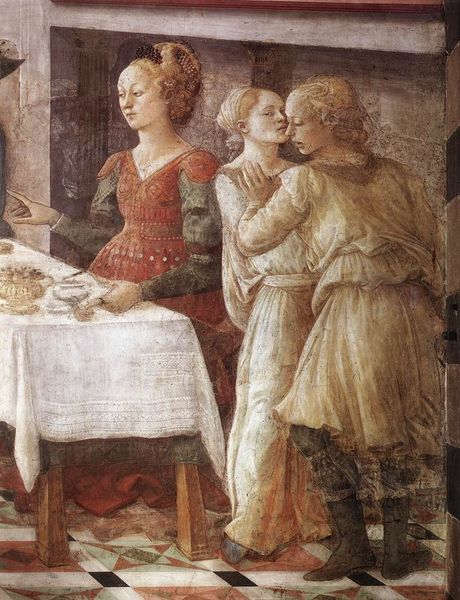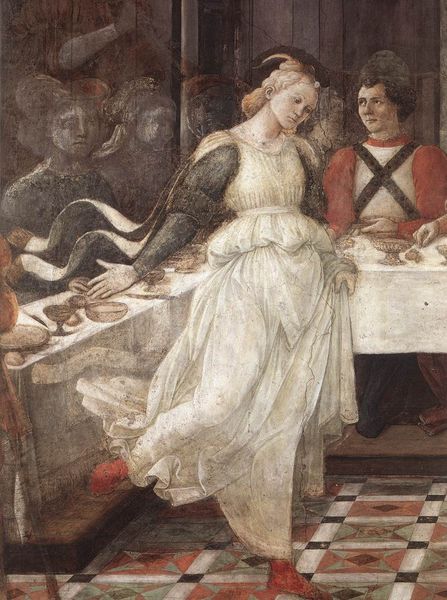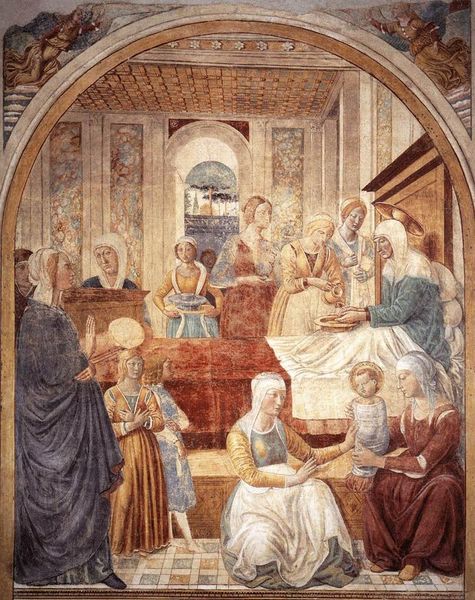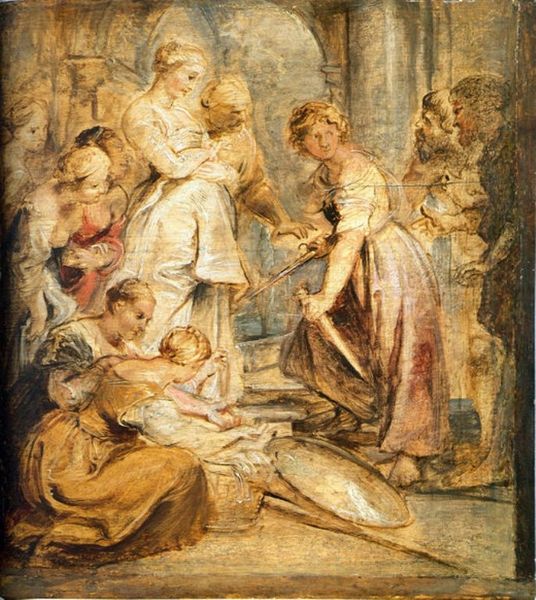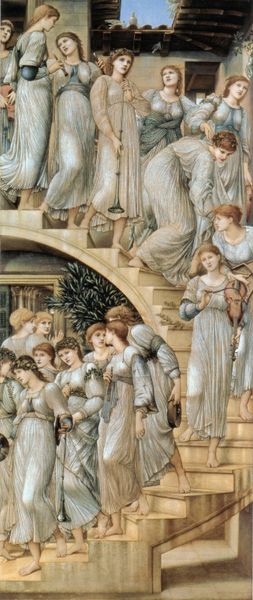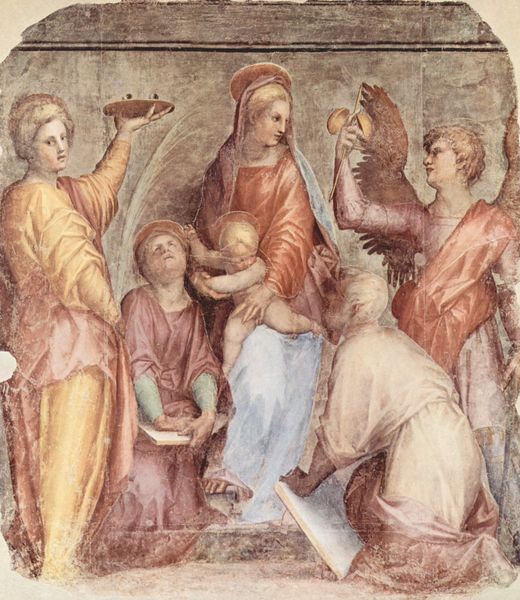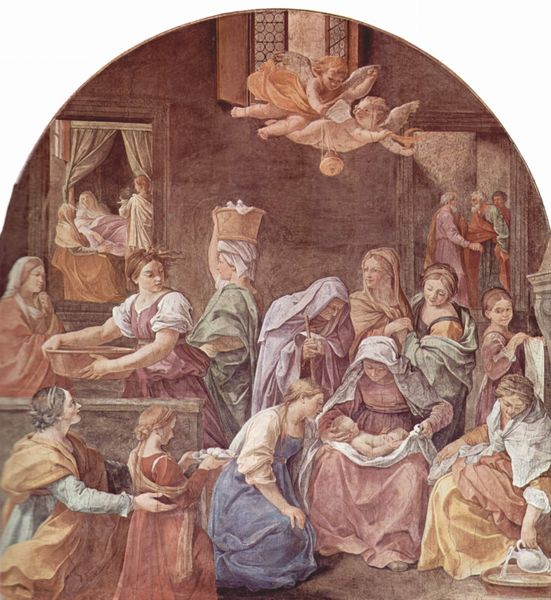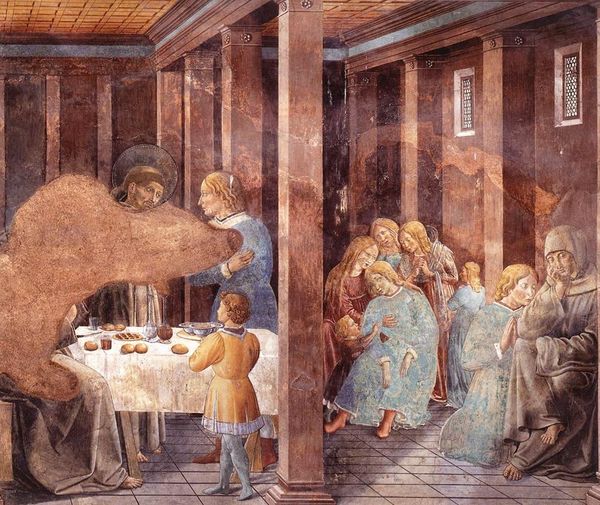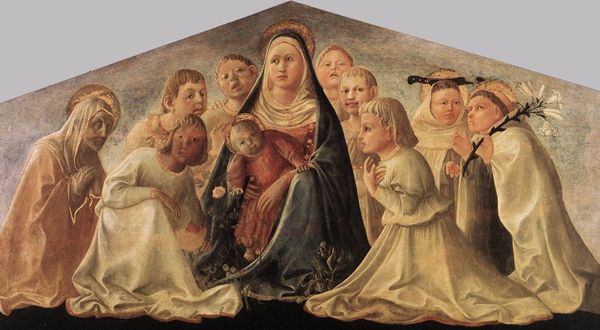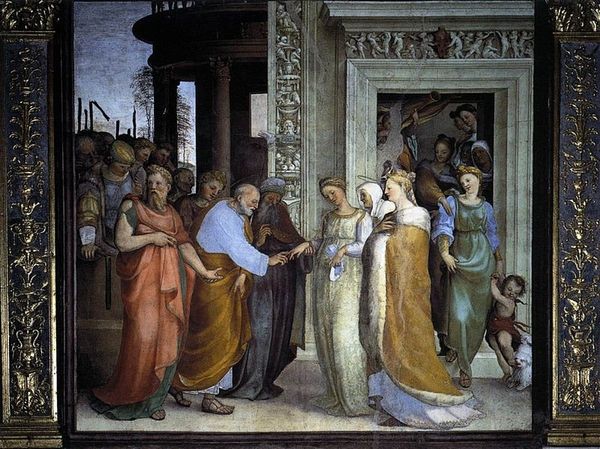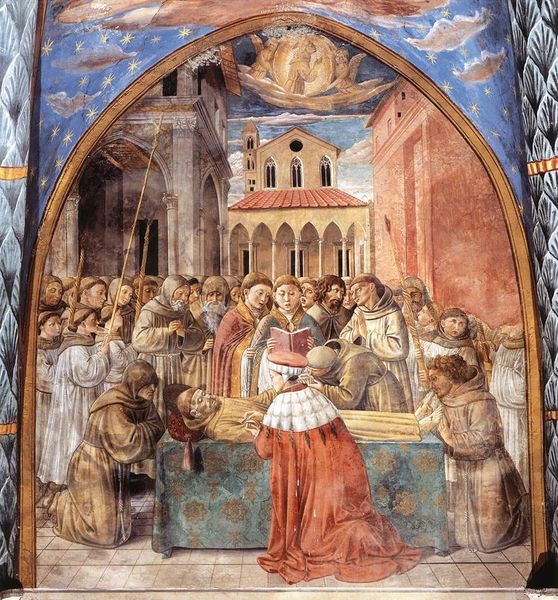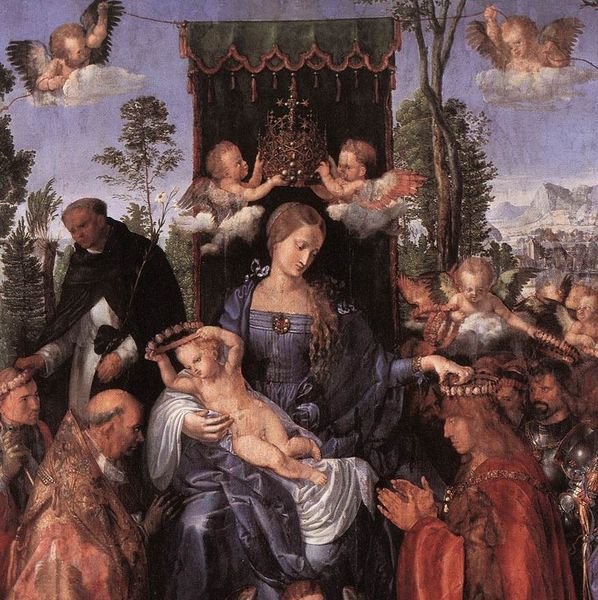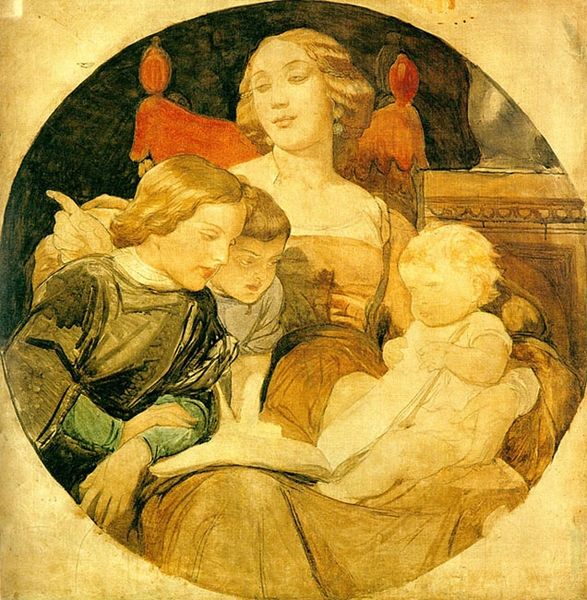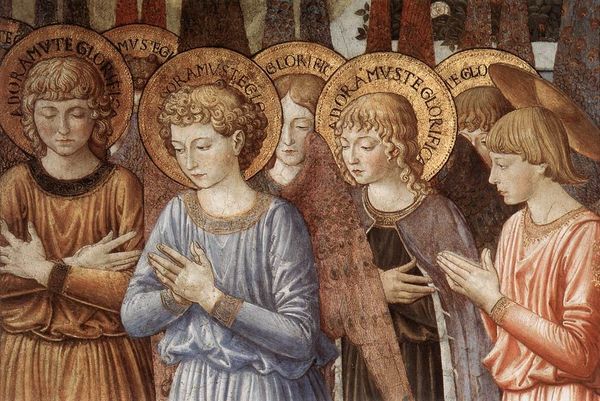
painting, fresco
#
narrative-art
#
painting
#
figuration
#
fresco
#
oil painting
#
christianity
#
painting painterly
#
history-painting
#
italian-renaissance
#
early-renaissance
#
christ
Copyright: Public domain
Curator: Let’s delve into Filippo Lippi's fresco fragment, "The Feast of Herod: Salome's Dance," completed around 1464. The muted tones and focused composition immediately strike me as a theatrical staging of power. What catches your eye first? Editor: The obvious focal point: Salome presenting the head of John the Baptist. What truly unsettles me is the almost nonchalant air surrounding such a gruesome act. Look at Herod – he barely glances at it. Curator: Indeed. Lippi's portrayal aligns with the Renaissance emphasis on perspective and drama, setting the scene in Herod's court as a tableau of controlled emotion despite the horrifying event. The power dynamics on display are quite striking if we consider that the act was to satisfy the desire of Herodias and her daughter Salome. Editor: Exactly. This is where the painting, even centuries later, speaks volumes about gender, agency, and societal expectations. Salome becomes a tool in a power game orchestrated by women denied other forms of authority, revealing how even victimhood can be weaponized. Curator: Fascinating how Lippi's masterful technique also reflects contemporary views on decorum and gender roles. Her garments and demure look make her the subject while she presents this gruesome object; simultaneously the subject and the object of violence. Editor: And that object, presented on a platter, signifies the cost of resisting authority – particularly patriarchal religious authority. It's a pointed reminder of the price paid for speaking truth to power, resonating even today in an age of censorship and oppression. The scene also asks viewers to recognize whose stories get silenced and who benefits from that silence. Curator: In observing how this single panel sits as a detail to the larger fresco we can ask about how history gets preserved by institutionalized authorities that seek to emphasize specific sociopolitical messages while simultaneously hiding others. The role of power brokers and image-makers in shaping perspectives becomes even more potent here. Editor: It definitely becomes important to see this beyond mere storytelling – this panel reflects how powerful, gendered figures are used for their social commentary purposes but also how that portrayal continues to perpetuate archetypes that should be seen as tools of oppression, rather than celebrated beauty or cunning power. Curator: That makes us think, doesn't it? Editor: Absolutely.
Comments
No comments
Be the first to comment and join the conversation on the ultimate creative platform.
